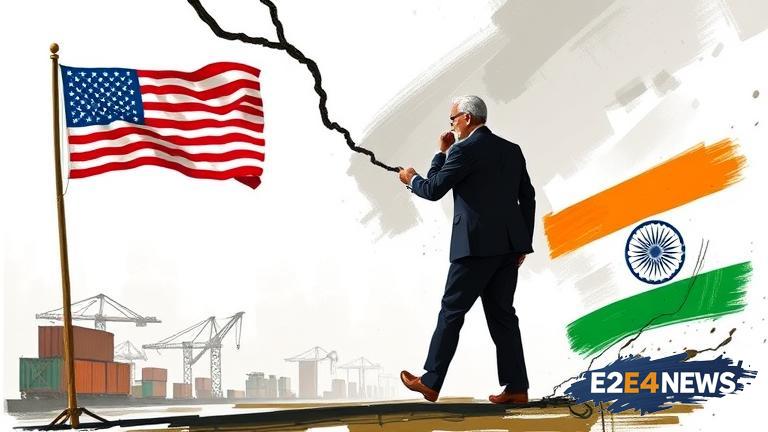The United States has announced that it will impose a 25% tariff on Indian goods, effective August 1, in response to India’s retaliatory tariffs on American products. This move is expected to escalate trade tensions between the two countries. The US Trade Representative’s office announced that the tariffs will be imposed on a range of Indian products, including textiles, chemicals, and agricultural products. The tariffs are being imposed in response to India’s decision to impose retaliatory tariffs on American products, including almonds, apples, and walnuts. The Indian government had imposed these tariffs in response to the US’s decision to withdraw India’s preferential trade status under the Generalized System of Preferences (GSP) program. The GSP program allows developing countries to export goods to the US at a lower tariff rate. The US had withdrawn India’s GSP status, citing concerns over India’s trade practices and market access. The Indian government had responded by imposing retaliatory tariffs on American products, which led to the US announcing its own tariffs on Indian goods. The trade tensions between the two countries have been escalating over the past year, with both sides imposing tariffs on each other’s products. The US has been seeking greater market access in India, particularly in the areas of agriculture and e-commerce. However, the Indian government has been resistant to these demands, citing concerns over the impact on domestic industries. The imposition of tariffs by the US is expected to have a significant impact on Indian exporters, who will have to pay higher duties on their products. The Indian government has announced that it will take all necessary steps to protect the interests of Indian exporters and industries. The trade tensions between the two countries are also expected to have a broader impact on the global economy, particularly in the areas of trade and investment. The World Trade Organization (WTO) has been seeking to resolve the trade tensions between the two countries, but so far, no agreement has been reached. The US and India have a long-standing trade relationship, with the US being one of India’s largest trading partners. However, the trade tensions between the two countries have been escalating over the past year, with both sides seeking to protect their domestic industries. The Indian government has announced that it will continue to engage with the US to resolve the trade tensions, but it will also take all necessary steps to protect the interests of Indian exporters and industries. The trade tensions between the two countries are expected to continue, with both sides seeking to negotiate a resolution. The US has been seeking to renegotiate its trade agreements with several countries, including India, China, and the European Union. The trade tensions between the US and India are part of a broader trend of protectionism and trade tensions that are affecting the global economy. The Indian government has announced that it will seek to diversify its trade relationships and reduce its dependence on the US market. The trade tensions between the two countries are also expected to have an impact on the Indian economy, particularly in the areas of exports and investment. The Indian government has announced that it will take all necessary steps to support Indian exporters and industries, including providing financial assistance and other support measures. The trade tensions between the two countries are expected to continue, with both sides seeking to negotiate a resolution. The US and India have a long-standing trade relationship, and it is expected that the two countries will seek to resolve their trade tensions through negotiations. The trade tensions between the two countries are part of a broader trend of protectionism and trade tensions that are affecting the global economy.
